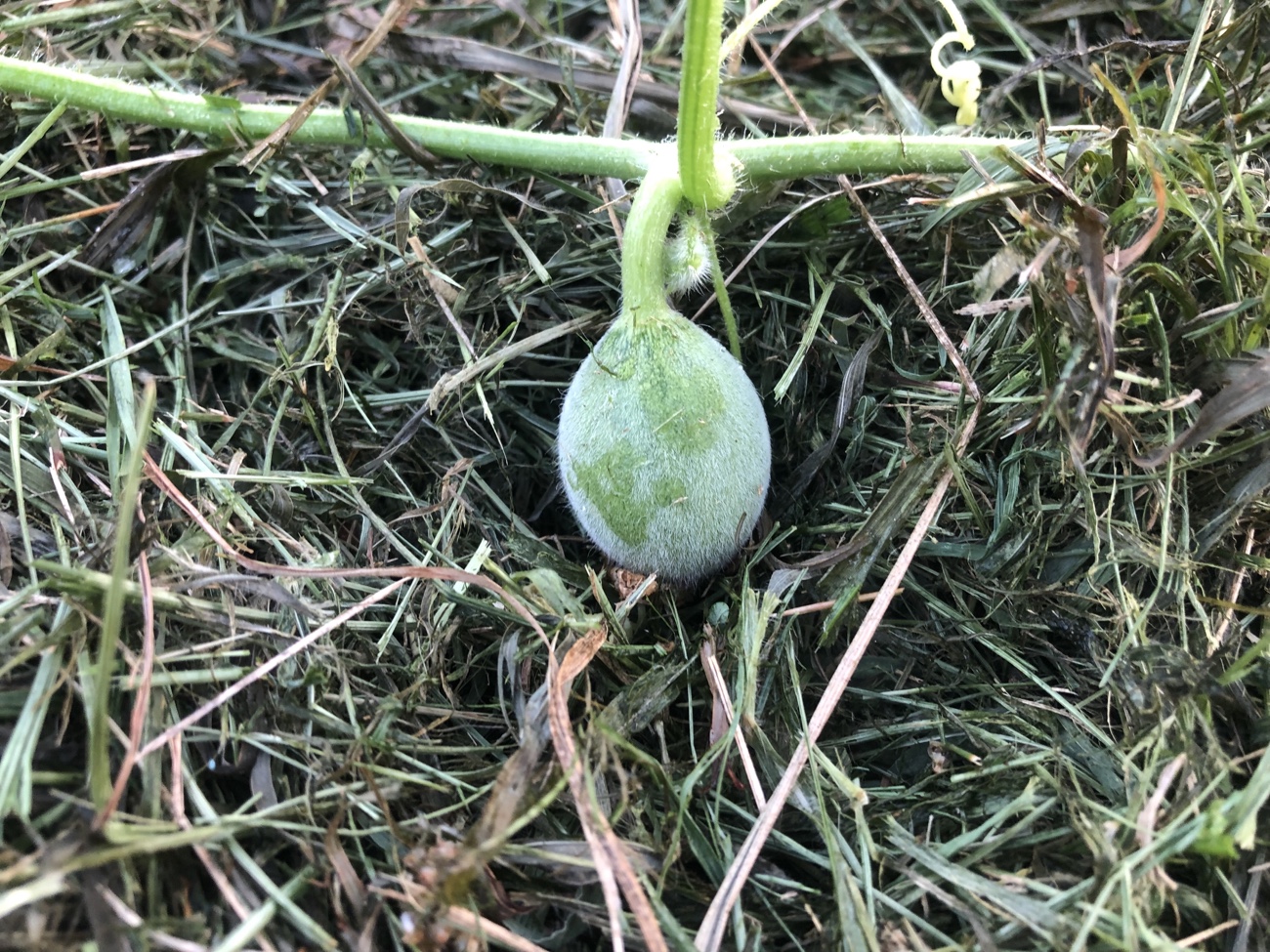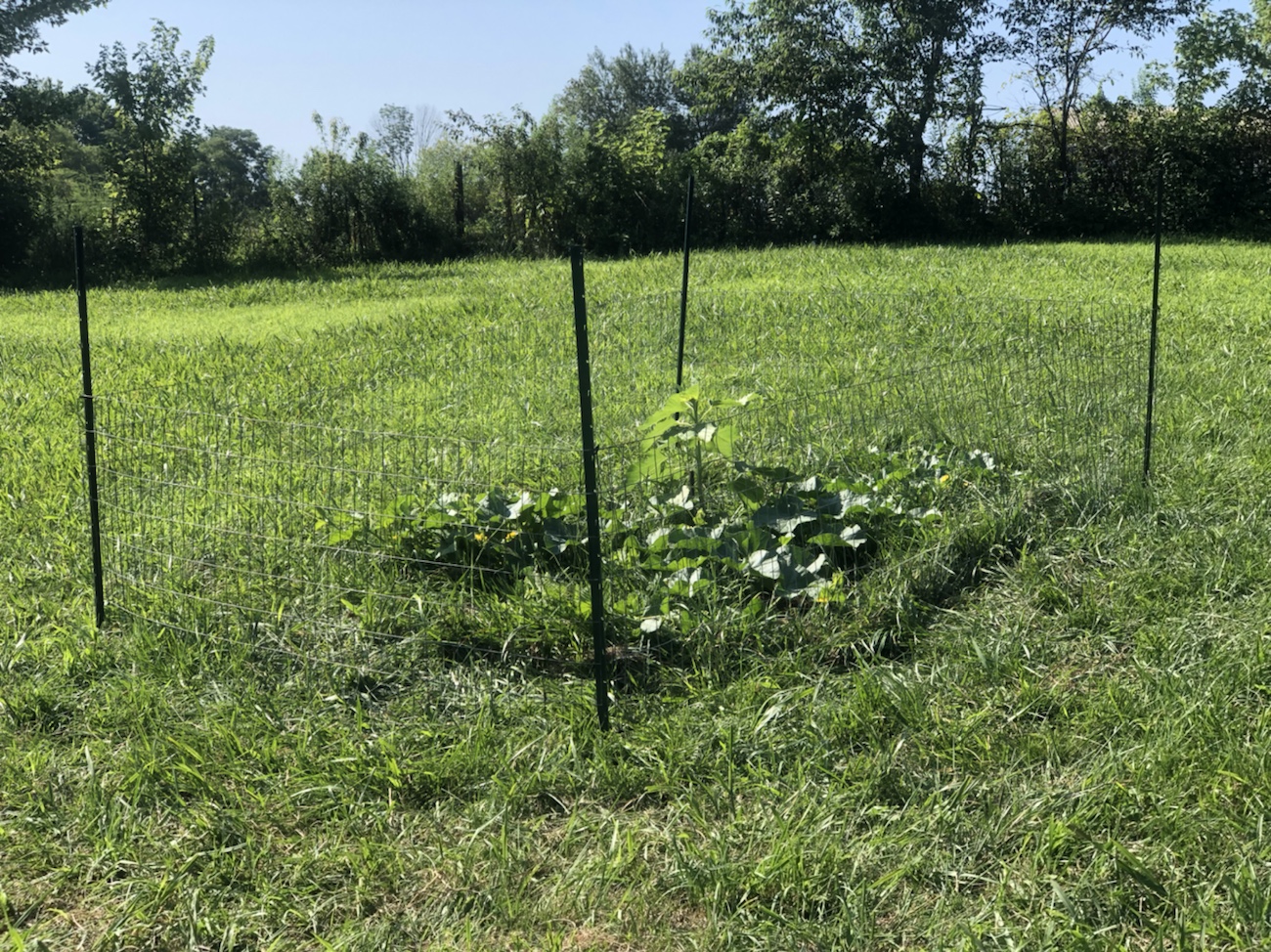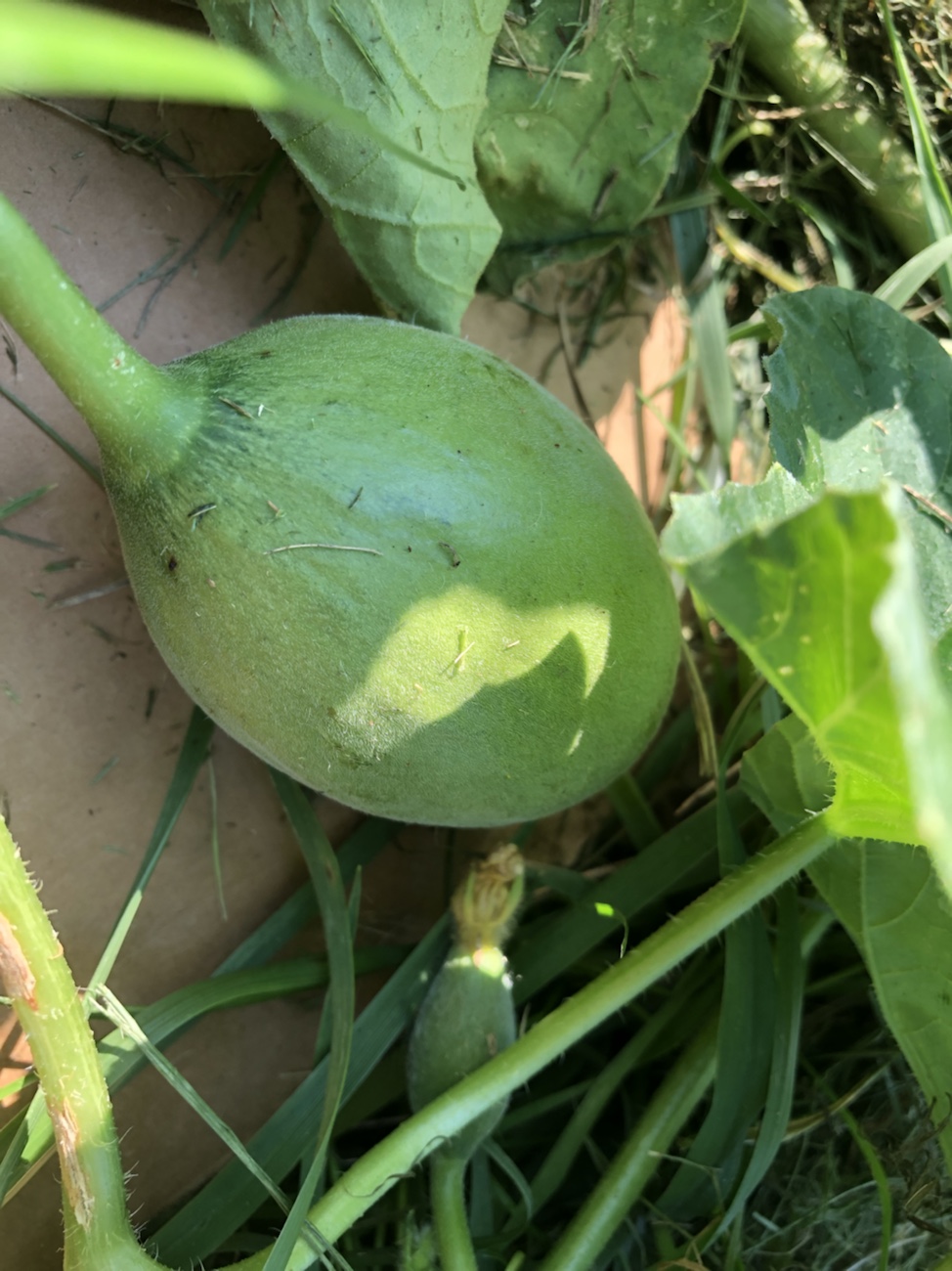
I previously posted about discovering some volunteer plants that turned out to be cantaloupes. Neat, right? Since these were food plants, I began to water them and mulch around them, hoping the flowers would become fruit. And they did!
On days without forecasted rain, I’ve been watering the cantaloupe vines in the very early morning. They’ve continued to grow more broad green leaves and vines that grasp the grass blades. I was watering and checking the plants and then I saw it: a baby melon. A real, tiny, green melon.

I immediately began reading about how to care for growing melons, and implemented the recommendation that cardboard be placed under the melon to protect it. Cardboard: check. The grass is also really thick around the melons and hand-pulling was becoming impractical (especially with cantaloupe vines intertwined with the grass), so I put down more mulch. The mulch should also help with moisture retention and keep baby melons off the ground until I can put cardboard under them – they do seem to appear, almost magically, where no melons had been before.
Since we have deer, rabbits, and other melon-eating wildlife out here, I fenced the “garden plot” with welded wire. I’ll be adding deer netting around the sides and top, too. As with nearly every project around here, it was very hot when I undertook it, and it took much longer than anticipated: there was a lot of time-consuming wire cutting, joining sections, pounding t-posts into rock hard ground, and a fair number of wounds inflicted by said wire. The job would have gone more quickly and smoothly with a second set of hands, but I was able to get the basic perimeter in place.

I’ve also been checking for cucumber beetles and dispatching those I find. While I know these spotted chartreuse beetles are just trying to survive, they can be devastating to cucurbits like melons because they feed on the plants and transmit bacterial wilt disease to them.
The first tiny melon has grown before my eyes. It’s several inches long now and, at least to me, incredibly beautiful.

While I didn’t intentionally plant these seeds, their determination has been inspiring…and has stoked my desire to intentionally grow food plants. One very ripe summer melon has become several sprawling plants (in already-amended soil – thank you, pasture pigs!) that may ultimately produce another ripe melon or more. Dare I hope? No longer just a spectator, I’m going to try to help these melons get to the finish line!
Do you have melon-growing tips? Please share them in the comments!

Comments are closed.